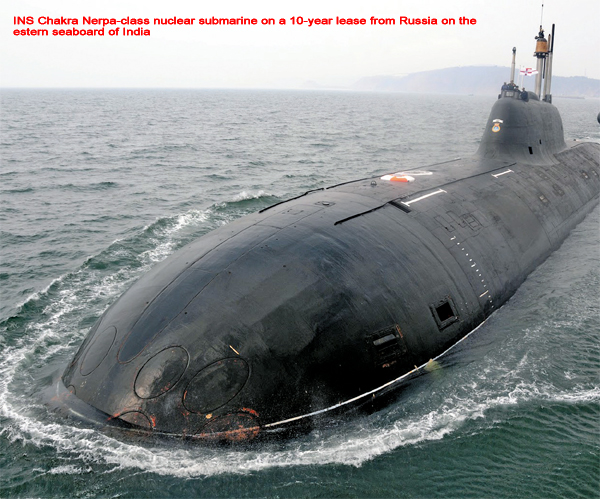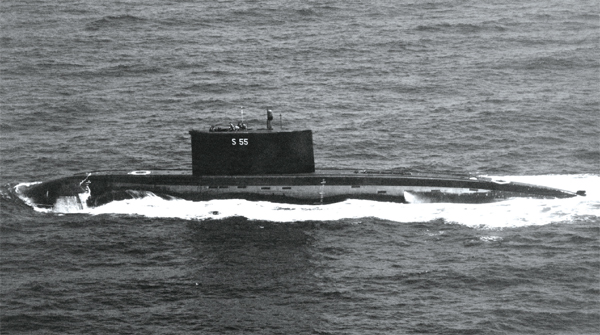|
Top on the table was the long pending Barak
missile acquisition programme. With the CBI finally
deciding to close the infamous seven year old
Barak kickback case for lack of evidence, the
Defence Ministry (MoD) decided on December 24
to clear the ‘critical’ naval procurement
of additional 262 Israeli Barak-I ship-borne air
defence missiles for `880 crore ($135 million
appx). The go-ahead will of course require the
final nod from the CCS Cabinet Committee on Security)
but, that would in all probability be just a formality
given that the Navy has for long been screaming
about its fast-depleting stock of missiles –
which arm the Israeli Barak-I ‘Anti Missile
Defence’ (AMD) systems fitted on at least
14 of its frontline warships that include the
aircraft carrier INS Viraat and the latest Shivalik-class
stealth frigates. The Navy is sure to heave a
sigh of relief as the decision, apart from helping
it halt deep erosion in its air defence and AMD
capabilities will also have a positive effect
in clearing the name of one of its former Chiefs
who was among the accused in the case.
It is evident that the MoD was right all along
with its consistent refusal to blacklist the Israeli
firms IAI and Rafael, holding, it would be “counter-productive”
to national security. Israel has been a trusted
defence supplier to India with annual sales worth
around $1 billion, year after year, stretching
more than a decade. Of the several projects underway,
IAI and DRDO are jointly developing a long-range
surface-to-air missile (LR-SAM) or Barak 2 system
for the Indian Navy at a cost of `2,600 crore
($450 million). Though repeatedly hit by delays,
the LR-SAM project is now slated to fructify in
2015/2016 giving the Indian Navy much needed boost
in its air/missile defence capability.

The Antony-led DAC (Defence Acquisition Council)
also gave its approval for two other long-delayed
naval projects. One was for the acquisition of
16 anti-submarine warfare (ASW) warships capable
of operating in shallow waters for `13,440 crore
($2.25 billion). The ASW boats, with a displacement
below 1,000 tonnes will no doubt be built in India,
thanks to the Navy’s robust design and indigenous
ship-building capabilities. These ships are crucial
to track and destroy enemy submarines lurking
in our coastal waters and ports.
The other naval proposal for two diving support
vessels which had been hanging fire for long and
which assumed much greater importance after the
tragic August 14 accident involving Indian Navy’s
Kilo-class Russian submarine, Sindhurakshak, also
got the DAC’s nod for procurement at an approximate
cost of `1,500 crore ($250 million). This project
had been stuck for over 15 years and while these
vessels would have had little application in the
case of Sindhurakshak which sank partially at
the pier; imagine if a similar accident had happened
at sea requiring immediate rescue of surviving
sailors trapped underwater in a sunken/disabled
submarine. Non-availability of DSRV (Deep Submergence
Rescue Vessel) would have caused great embarrassment
to the nation, when the Indian Navy is aspiring
to be a true ‘Blue water’ maritime force.
The US Navy had felt the need of DSRVs early
after it lost all hands on board in an accident
on its submarine USS Thresher in 1963. The US
navy subsequently acquired two DSRVs ‘Mystic’
and ‘Avalon’, respectively. These vessels,
although primarily designed for the rescue of
downed submarines, could also be used for certain
clandestine missions.
The US Deep Submergence Rescue Vehicle (DSRV)
is designed to rescue 24 people at a time at depths
of up to 600 m (2,000 ft). Their maximum operating
depth is 1,500 m (5,000 ft). Power is provided
by 2 large batteries, one fore and one aft that
power the electrical, hydraulic and life support
systems. The DSRV uses mercury in a completely
sealed system to allow themselves to match any
angle (up to 45°) in both pitch and roll so
as to ‘mate’ (attach) to a downed submarine
that may be at an angle on the sea floor. The
DSRV is capable of being transported by US Air
Force C-5 Galaxy to anywhere in the world within
24 hours. It is then loaded onto a ‘Mother
Submarine’ (MOSUB). The MOSUB carries the
DSRV to the rescue site where several trips are
made to rescue all personnel. Rescue is accomplished
by ferrying sailors from the stranded submarine
to the MOSUB; however, they can also be taken
to a properly equipped surface support ship.

In addition to a number of US Navy submarines
being outfitted for MOSUB capabilities, several
NATO countries also have submarines outfitted
to carry the US Navy DSRV for rescue capability
as needed. Both the UK and French Navies have
such submarines. While the Indian Navy reportedly
has some sort of an arrangement for DSRV support
from the US Navy, its efficacy in real-time scenarios
is debatable. For example, in the Indian Navy’s
case, it is not clear whether any of its existing
submarines can be used in the MOSUB role. In other
words, it may be dependent for both the DSRV as
well as the MOSUB to the US/NATO Navies.
In any case, the US Navy’s DSRVs are being
replaced by SRDRS (Submarine Rescue Diving Recompression
System) which is a remotely operated underwater
vehicle based on the Royal Australian Navy Submarine
rescue vehicle ‘Remora’ (literally –
Really Excellent Method of Rescuing ‘Ausies’).
The system is capable of rapidly deploying to
a designated location, mounting to a vessel of
opportunity, detecting and preparing the area
around a downed submarine and submerging to great
depths (2,000ft/600m) to give aid and retrieve
members of its crew. The SDRS then allows for
the decompression of the crew. Remora is based
on a diving bell design.
Other major navies around the globe have also
developed and operationalised their own versions
of rescue vessels. While DSRV is the term most
often used by the United States Navy other nations
have different designations for their vehicles
In Europe, France, UK and Norway share the NATO
Submarine Rescue System programme. The Italian
Navy on the other hand, operates its own SRV-300
submersible in the submarine rescue role. Swedish
Navy has a submarine rescue ship HMS Belos which
can carry ‘URF’ Submarine Rescue Vessel.
Russia is believed to have one vessel of the
Bester class and five of the Priz class, which
was involved in the failed attempt to rescue the
crew of the Kursk.
In Asia, the People’s Republic of China
has three Dajiang class submarine rescue ships.
Each ship is equipped with two DSRVs. The lead
ship of the Dajiang class is called ‘Changxingdao’.
The Japanese Maritime Self Defence Force (JMSDF)
also operates two DSRVs with dedicated mother
ships named ‘Chiyoda’ and ‘Chihaya’,
respectively. The South Korean navy operates a
submarine rescue ship called Cheong Haejin. It
has a dedicated mother ship. The model is based
on a modified British design. Even Singapore Navy
has its own dedicated submarine recovery vessel
– MV Swift Rescue – which was launched
on November 29, 2008.
As is the case with the Indian Air Force (IAF)
with aspirations to transform itself into a leading
modern aerospace force with trans-continental
capabilities, the Indian Navy (IN) too is making
rapid strides in acquiring the status of what
it terms as a regional/global ‘Blue Water’
Navy. In its transformation plans, the Navy is
giving due emphasis to its submarine arm. It is
going ahead with building six French Scorpene-class
Diesel-Electric submarines in the Indian ship-building
yards under ‘Transfer of Technology’.
Inductions of all six are planned to be completed
by the end of 13th Plan (2022) in a phased manner
starting 2016. Last year in April, INS Chakra
(Formerly Russian ‘Nerpa’) nuclear powered
submarine was inducted into the Indian Navy on
a 10-year lease basis with provisions of a buy-back.
The Navy is all set to similarly induct another
Russian Nerpa class submarine Ibiris which could
be rechristened carrying the name of another devastatingly
powerful weapon from the Indian mythology. Its
own indigenous effort to build nuclear powered
submarines has finally fructified with INS Arihant
shortly taking to conducting sea trials under
its own nuclear power. Under the ATV (Advanced
Technology Vehicle) project, it is planned to
build a total of five Arihant-class vessels.
While the Navy is trying desperately to build
on its submarine arm, it is evident it would have
to carry on with its ageing fleets of the Russian
Kilo (Sindhughosh)-class and the German HDW (Shishumar)-class
submarines for years to come along with the new
inductions. It is also clear that like any other
self-respecting navy, especially when it is working
hard to become a ‘Blue Water’ maritime
force, the Indian Navy too should acquire the
much needed deep submergence rescue capabilities
to meet any underwater requirements for its stricken
submarine vessels.
MoD’s Christmas Eve decision in granting
approval for the acquisition could not have come
sooner. It is only hoped that actual procurement
of the diving support and rescue vessels wouldn’t
follow the 15-year route of decision making and
will be done with the speed and dispatch, it deserves.
|